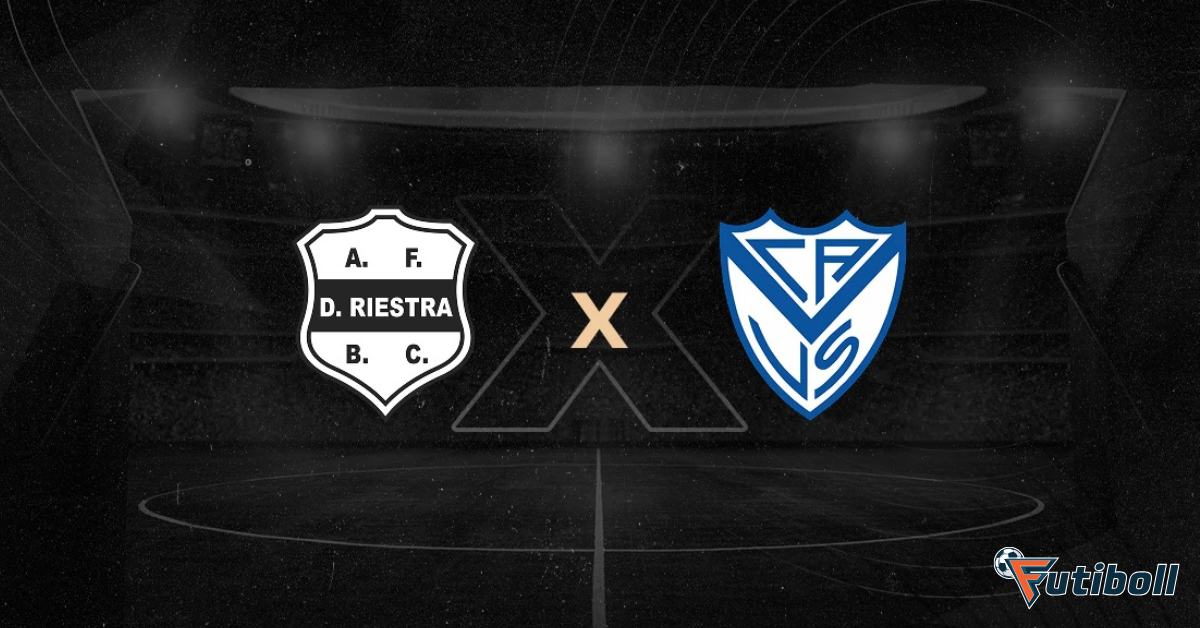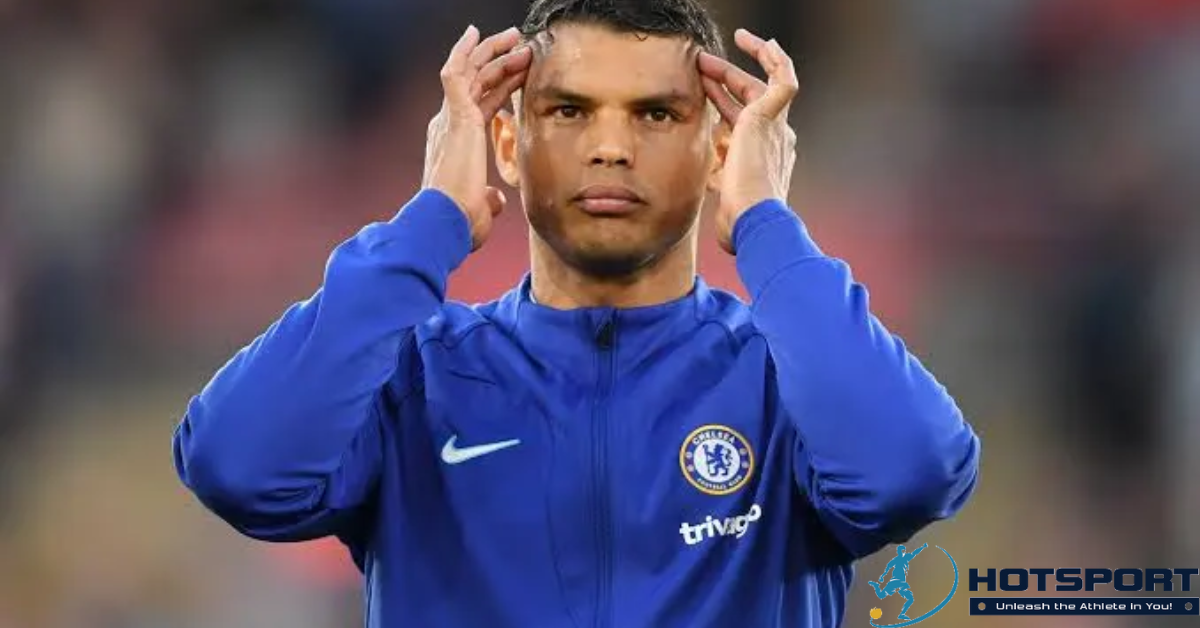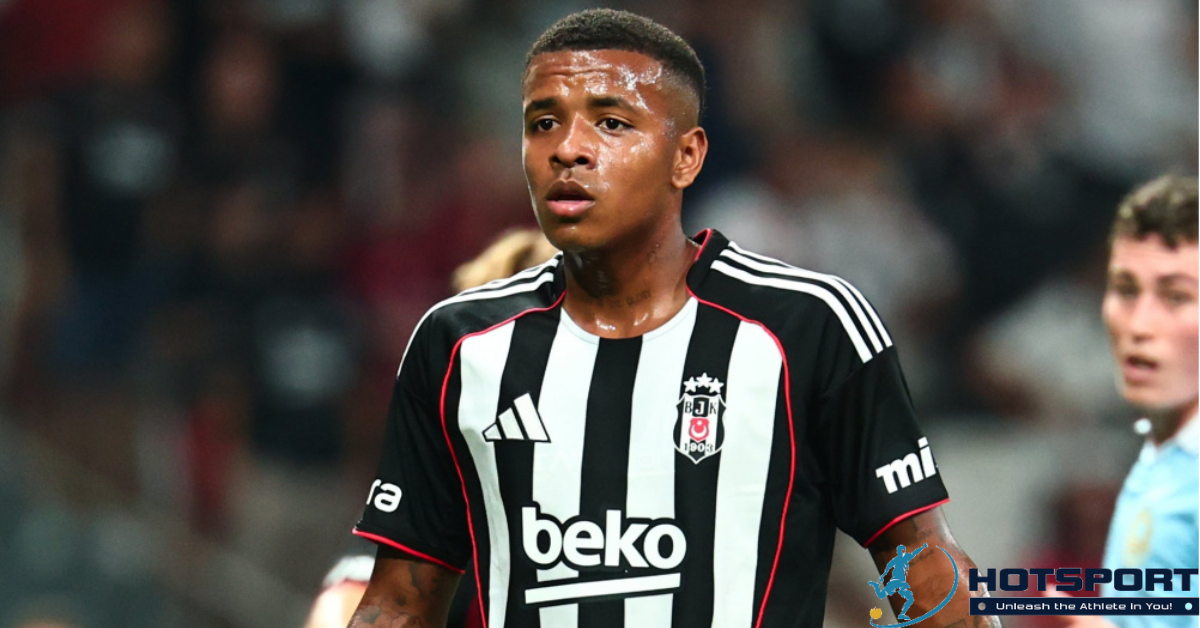Introduction – Deportivo Riestra vs Vélez Sársfield
On October 6, 2025, the Guillermo Laza Stadium hosted a true battle between Deportivo Riestra and Vélez Sársfield in the 11th round of the Argentine Professional League. The match ended 2-2, but the scoreline doesn’t reflect the intensity, commitment, and drama experienced on the field.
The match was marked by alternating dominance, defensive lapses, stunning goals, and a comeback that seemed to seal Riestra’s victory, but ended in a draw in the final minutes after an unfortunate own goal. Vélez showed resilience and a strong comeback, while Riestra demonstrated strength and grit, but let an important home victory slip away.
This result keeps the championship open and reinforces the competitiveness of the teams vying for the top spots. Both clubs remain steadfast in their pursuit of qualification for the knockout stages and have shown that they are among the most consistent teams in the 2025 season.
Pre-Game Situation – Expectations, Context and Preparation
Teams’ Moment
Before the match began, Deportivo Riestra was enjoying an excellent run of home games, with important victories and a solid defense. The team had earned 22 points in ten games, the result of a balanced and effective campaign.
Vélez Sársfield, meanwhile, was also on a roll, sitting in the top four with 21 points and only one loss. Under the current manager, the team has prioritized possession and attacking play, creating plenty of chances and controlling the pace of matches.
Both coaches knew the importance of this head-to-head clash, which could redefine the top positions in the table. The atmosphere was one of an early final.
Tactical expectations and game keys
Riestra entered the field with a clear strategy: to play defensively, break out quickly down the flanks, and capitalize on the physical strength of their forwards. Vélez maintained their dominant style, with high possession, triangles, and wide attack.
The main question was whether Riestra could contain Vélez’s high-volume play, which tends to suffocate opponents in defense. The plan was to seek quick transitions and surprise on the counterattack.
Prognosis and tension in the air
The atmosphere before the game was one of high anticipation. Fans packed the stands, aware that this was a decisive duel. Analysts predicted a balanced match, with Vélez slightly favored due to their technical quality, but Riestra showing strength at home. Tactical balance and intensity were the hallmarks from the opening whistle.
Lineups and protagonists of the duel
Deportivo Riestra
The coach maintained his preferred formation, with Ignacio Arce in goal and a solid defensive line of Cristian Paz, Miguel Barbieri, Facundo Miño, Nicolás Sansotre, and Pedro Ramírez. The midfield consisted of Pablo Monje, Alexander Díaz, and Jonathan Goitia, with Jonathan Herrera and Antony Alonso leading the attack.
The team relied on compactness and tactical discipline, blocking spaces and betting on long balls. Herrera was the offensive standout, always well-positioned and directly involved in the goals.
Velez Sarsfield
Vélez started with Tomás Marchiori in goal, with Agustín Lagos, Lisandro Magallán, Aaron Quirós, and Elias Gómez in defense. In midfield, Claudio Baeza and Rodrigo Aliendro formed the holding duo, with Francisco Pizzini, Tomás Galván, and Matías Pellegrini responsible for the creation. Braian Romero led the attack.
Vélez’s goal was clear: dominate the game through possession and constant movement. Magallán had a standout performance in both defense and attack, capped off with a header that gave the team hope.
Game Timeline – Excitement from start to finish
The game started with Vélez dominating possession and controlling the midfield, but it was Riestra who opened the scoring in the 38th minute, with Alexander Díaz taking advantage of a mistake in the ball out.
Vélez’s reaction was immediate. In first-half stoppage time, Lisandro Magallán equalized from a corner kick, capitalizing on a poor marking. Halftime arrived with the score at 1-1 and the game completely even.
On the return leg, Riestra showed intensity and regained the lead in the 55th minute, with Jonathan Herrera scoring a beautiful goal after a well-worked play through the middle. The fans erupted in euphoria.
Just when everything seemed decided, the final blow came: in the 87th minute, an unassuming cross resulted in an own goal by Mateo Ramírez, who tried to head it away but sent it into his own net. The 2-2 draw frustrated the home team and was greeted with relief by the visitors.
Confrontation Statistics – Deportivo Riestra x Vélez Sársfield
| Statistic | Deportivo Riestra | Velez Sarsfield |
|---|---|---|
| Final Score | 2 | 2 |
| Ball Possession | 28% | 72% |
| Finalizations | 10 | 7 |
| Corners | 2 | 5 |
| Yellow Cards | 4 | 4 |
| Fouls Committed | 21 | 11 |
| Right Passes | 115 | 413 |
| Wrong Passes | 58 | 102 |
These numbers demonstrate Vélez’s superiority in possession, but also Riestra’s efficiency in capitalizing on opportunities. The statistics reinforce the idea that dominating the ball doesn’t always mean winning—efficiency and emotional balance are crucial in big matches.
Tactical and Collective Analysis – Deportivo Riestra x Vélez Sársfield
Riestra’s plan
Riestra played intelligently, relinquishing possession to prioritize compaction. With low lines and quick transitions, they exploited the spaces behind the Vélez defense. The Herrera-Díaz duo moved well, making marking difficult.
Despite good tactical execution, the team failed to maintain concentration in the final minutes, costing them two precious points. The miscommunication between the defense and goalkeeper during the own goal demonstrated how details determine results.
Vélez’s reaction
Vélez maintained its signature style of play: possession, width, and high pressure. Even at a disadvantage, they didn’t despair and continued passing the ball around until they found openings. The coach made attacking substitutions that paid off, especially with the introduction of Matías Pellegrini, who added more dynamism down the left.
The team demonstrated maturity in seeking an equalizer and the ability to capitalize on opponents’ mistakes. This ability to react is what keeps Vélez among the title contenders.
Impact on Table and Outlook
With the draw, Deportivo Riestra reached 23 points, remaining at the top of the table. Vélez reached 22 points, remaining firmly in the top four. The result wasn’t ideal for either team, but it keeps them both in the fight for the top spots.
Based on this result, Riestra needs to adjust its defensive behavior in moments of pressure, while Vélez must improve its chance conversion, as possession doesn’t translate into goals as often.
The championship remains open and promises a fierce competition until the final rounds. Every point earned—or lost—could be decisive in determining the 2025 Clausura champion.
Conclusion – Deportivo Riestra vs Vélez Sársfield
The Deportivo Riestra vs. Vélez Sársfield match was a true reflection of Argentine football: grit, excitement, and unpredictability. The 2-2 draw had it all—great goals, mistakes, drama, and total commitment.
Riestra regrets letting the victory slip away, while Vélez celebrates a point earned away from home in one of the tournament’s most difficult stadiums. Both teams demonstrated quality and demonstrated their readiness to fight for the top spot.
Fans can be sure that the season still has great emotions and epic clashes like this one in store.
Frequently Asked Questions (FAQs) – Deportivo Riestra vs Vélez Sársfield
1. Who scored the goals in the match?
Alexander Díaz and Jonathan Herrera scored for Riestra; Lisandro Magallán and an own goal by Mateo Ramírez gave Vélez the draw.
2. What was the standout player of the match?
Jonathan Herrera was the most effective for Riestra, while Magallán was the technical leader for Vélez, actively participating in the draw.
3. What’s the standings like after the game?
Riestra has 23 points and remains at the top. Vélez is right behind with 22 points, still in the top four.
4. What tactical formation did you use?
Riestra played a 5-3-2 formation, prioritizing defense and transitions. Vélez played a 4-2-3-1 formation, focusing on possession and controlling the midfield.
5. When do the teams return to action?
Vélez will face Independiente, while Riestra will visit Rosario Central in the next round.



